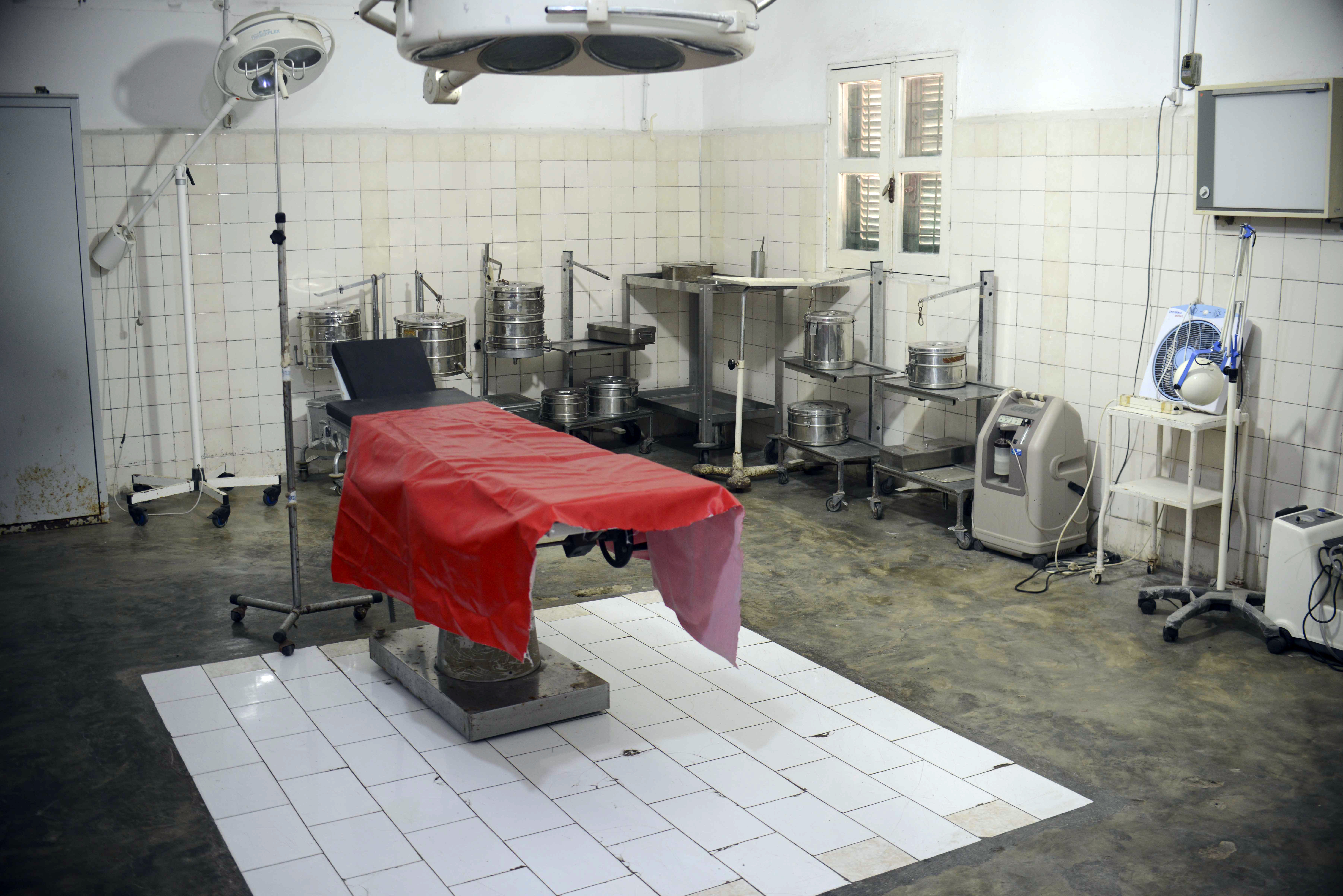Saving cassava crop requires global effort

As the effort to save cassava intensifies, Swiss researchers are ready to start field trials in Africa of a new genetically-modified virus-resistant strain of the plant, a crucial source of food and income for 300 million Africans.
Food security hopes have been pinned on the drought and heat resistant cassava plant, considered the perfect staple crop for many regions where growing conditions are deteriorating due to climate change.
However cassava production in Africa is under threat from the devastating cassava brown streak disease (CBSD). Unchecked, the growing CBSD pandemic could spell disaster or even famine in many parts of the continent, agriculture experts warn.
“We are highly concerned that the disease could spread to West Africa and particularly Nigeria. The human and economic impact could be absolutely disastrous,” scientist Claude Fauquet of the Global Cassava Partnership for the 21st Century (GCP21) told swissinfo.ch.
Nigeria is the world’s largest producer and consumer of cassava but the crop is grown in most tropical countries. “There is even the fear that this disease could spread to South America and places like Thailand, where cassava is worth $2 billion (CHF1.9 bilion) annually to the economy,” Fauquet added.
Field work
Researchers at Zurich’s Federal Institute of Technology (ETHZ), led by Hervé Vanderschuren, have used gene technology to develop a new cassava variety that is resistant to brown streak disease.
Vanderschuren recently returned from a visit to a research centre in southern Nigeria to discuss potential collaboration to carry out field trials of the transgenic cassava. Soon he hopes to see African researchers making their own transgenic plants in African labs, engineering traits adapted to local needs.
“We try to have a more holistic approach in terms of technology transfer. The long-term solution is not just about transferring technology from Western labs into Africa but enabling this technology to be directly implemented in African countries,” he told swissinfo.ch.
The Swiss team has some initial funding to prepare the way for trials but more is needed to pay for the expensive GM testing installation.
GM sensitive
But funding is not the only obstacle. Acceptance of GM crops in Africa has so far been slow. There are only four African countries that allow GM crops to be grown commercially – South Africa, Egypt, Burkina Faso and Sudan. Five other countries have taken the step of allowing confined trials.
In Nigeria a bill accepted by parliament to loosen the country’s ban on genetically modified organisms is awaiting presidential approval.
The ETH scientists are aware of the sensitivity of promoting a technology still highly restricted in Europe. “All the work we are doing is letting them have the technology. We are not trying to impose or force them to use this technology,” Vanderschuren said.
The Global Cassava Partnership says “game-changing” technologies are needed to address the threats to cassava. Fauquet believes that GM has a contribution to make and he makes a distinction between the work on cassava and GM for profit.
“In this case it is for humanitarian purposes, not for making money or exploiting people in any way. But there is no magic bullet and this is just one element in the roadmap.”
New outbreaks
An important component of the roadmap is surveillance and monitoring to allow an effective response to new outbreaks. “When there is a new invasion, the disease is much easier to control,” added Fauquet.
So far CBSD is prevalent in Malawi, Tanzania, Mozambique and Uganda. There have been recent reports of new outbreaks in the Democratic Republic of the Congo—the world’s third largest cassava producer—and Angola, where production has boomed in recent years.
(The video below from the International Center for Tropical Agriculture (CIAT) shows the impact of brown streak disease on farmers in Tanzania)
Good practice
“On the research side a number of things have never been done, for example resistance to whitefly, ” Fauquet said. Both brown streak disease and the other scourge of African farmers cassava mosaic disease (CMD) are spread by the same silverleaf whitefly, which is very difficult to control.
Hans R. Herren is a prominent Swiss scientist with specialist knowledge of the plant whose work in tackling the cassava mealybug scourge in Africa saved millions of lives and won him the 1995 World Food Prize.
Founder and president of the Swiss foundation for ecological development, Biovision, Herren sees no place for GM in combatting the latest problems with cassava. “I have seen cassava brown streak disease and mosaic disease. These problems are man-made through bad agronomic practices such as the planting of infected cuttings,” he told swissinfo.ch.
“The problem with GM crops is that they usually deal with the symptoms rather than the cause … and so only provide a temporary, expensive solution that is untested with regard to ecological, health and eco-social costs.”
“In the end we are not really advancing but losing biodiversity and increasing costs, both for farmers and consumers,” he added.
First identified in 1935 in East Africa and little-known until about ten years ago, CBSD has emerged as the most serious threat among the various cassava viruses.
Infections can claim 100 percent of a farmer’s harvest without the farmer’s knowledge.
The leaves of infected plants can look healthy even as the roots, cassava’s most prized asset, are being ravaged underground. The tell-tale signs of the disease are brown streaks in the root’s flesh.
The virus is spread by the silverleaf whitefly. While it would take several years for the disease to spread across the continent via whiteflies alone, infected stem cuttings can spark outbreaks in new areas overnight.
Source Global Cassava Partnership (GCP21)
Call to action
So what does Herren propose? One measure that would have immediate effect would be to raise awareness among farmers of good planting practices. At the same time he would combat the whitefly in the same way he tackled the mealybug and green mite – with biological control.
“We used what nature provided at zero cost, solving the problem permanently. We searched for beneficial insects – essentially good mites to eat the bad mites – and found them. Today both pests are under full control.”
This year’s World Food Prize was awarded to three scientists who developed GM technolgies. One thing observers agree on is the need to act on cassava and allocate resources for its protection.
“What’s needed is a change in mind set. We need to tell the world that this is a very important crop. To protect it we need to be serious in terms of investment and organisation,” Fauquet said.
“We need to double or triple the amount spent on investment. The world population is increasing fast, if we are not able to feed people there will be tremendous unrest and it will cost global society a lot more in the long run,” he added.

In compliance with the JTI standards
More: SWI swissinfo.ch certified by the Journalism Trust Initiative











You can find an overview of ongoing debates with our journalists here . Please join us!
If you want to start a conversation about a topic raised in this article or want to report factual errors, email us at english@swissinfo.ch.